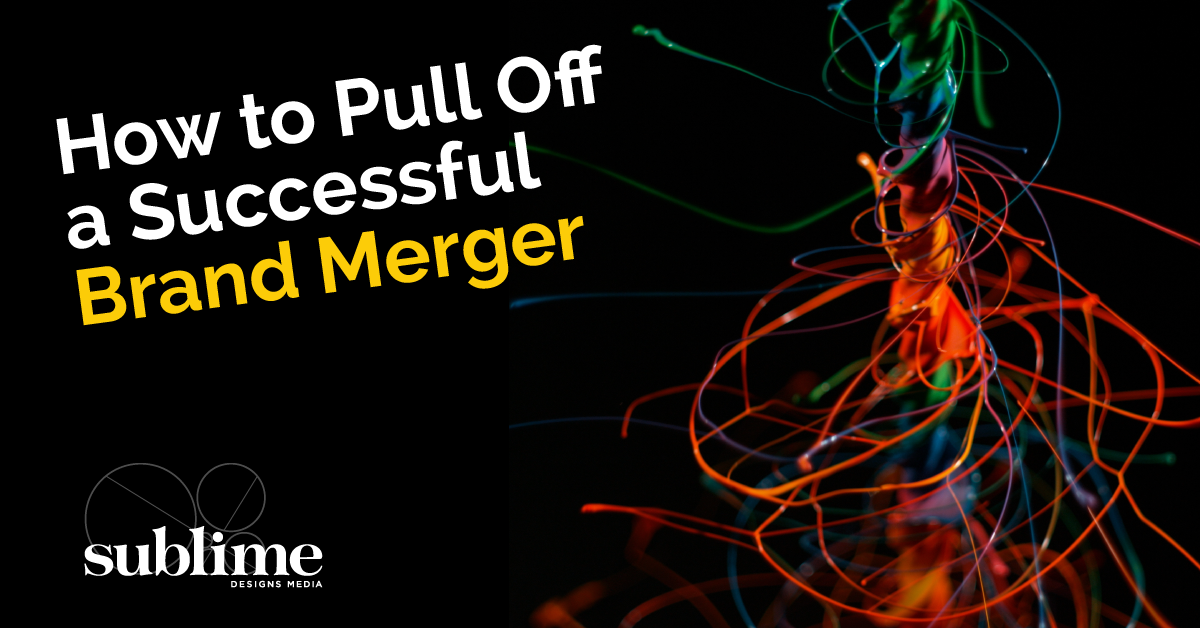Merging brands is a lot like merging lives with someone else when you get married. Although you’re dealing with more complex questions than whose blender to keep, in both situations the answers aren’t always black and white and there are a ton of variables to consider. Moreover, the decisions you make will have major and lasting impacts on the business, beyond whether your morning smoothie is the perfect thickness. Below is a quick primer on merging brands to get you thinking about the right things.
To start, you essentially have three options in how you’ll approach the merger:
- Fold one brand into another: When Wells Fargo and Norwest merged in the late 90’s, despite Wells Fargo being the smaller entity, it had stronger brand equity, and thus the two brands decided to move forward as one with the existing Wells Fargo brand. After Songza was acquired by Google in 2014, it eventually merged to become Google Play Music in 2016, with the former Songza site redirecting visitors to Google Play Music.
- Create a “sub-brand”: Sub-brands are a great option to maintain brand awareness among respective brands. When Hilton acquired Promus Hotel Corporation (whose portfolio included the DoubleTree brand), they launched a new logo and created a sub-brand, calling it DoubleTree by Hilton.
- Keep the brands totally separate: When Facebook first acquired WhatsApp, some wondered how it might impact WhatsApp’s brand identity. But if you ask a WhatsApp user today if they know Facebook owns the platform, chances are they don’t. The same could be said for LinkedIn, which was acquired by Microsoft in 2016. Skeptics of the acquisition wondered if LinkedIn could thrive under the Microsoft umbrella but in the last few years it’s been cited that Microsoft allowing LinkedIn to operate mostly independently has been a key reason for the success of the deal.
So how do you decide which option is best for you? Here are a few things that need to be taken into consideration to answer this:
- Brand Equity: How much brand equity do the respective brands have? If one is well known regionally and would take a hit if the brand was completely eliminated, consider making it a sub-brand rather than merging it together. If you’re acquiring a company with a bad reputation, then a fresh start is probably in order.
- Budget: What’s your budget? When you’re a bigger company with millions of dollars for a marketing budget, this may be ok. But when you’re a smaller organization with limited resources and budget, it’s going to become expensive maintaining multiple brands. In this case, a merger may be more beneficial as you’ll only need to support one brand.
- Cross-selling: Are you cross-selling products? Salesforce’s acquisition of both Tableau and Pardot are great examples of this. In this case, it was beneficial to bring the brands together because then you can sell them together, resulting in bigger deals and increased revenue. Instead of saying “We have this other company that can provide these services,” you can say, “We have all of this functionality and these capabilities under one roof.”
- Legal: You might find yourself in the situation where you have to keep brands separate due to legal reasons. This is always something you should do your due diligence on and consider. With non-profits, for instance, there are many limitations and implications to operating as a 501(c)(3) brand versus those of a 501(c)(4). While one group may create, build, and operate both, everything from branding and budgets to the bank accounts they use need to stay separate.
This list and these suggestions are merely a starting point for what to take into consideration when participating in any kind of brand mergers. Next time, we’ll dive into what to do after you’ve decided to merge two brands and how to handle design and messaging.
We know these can be difficult questions to tackle and every business has different needs and circumstances. If you’re looking for an expert to talk this through with and help guide you, reach out at [email protected].
